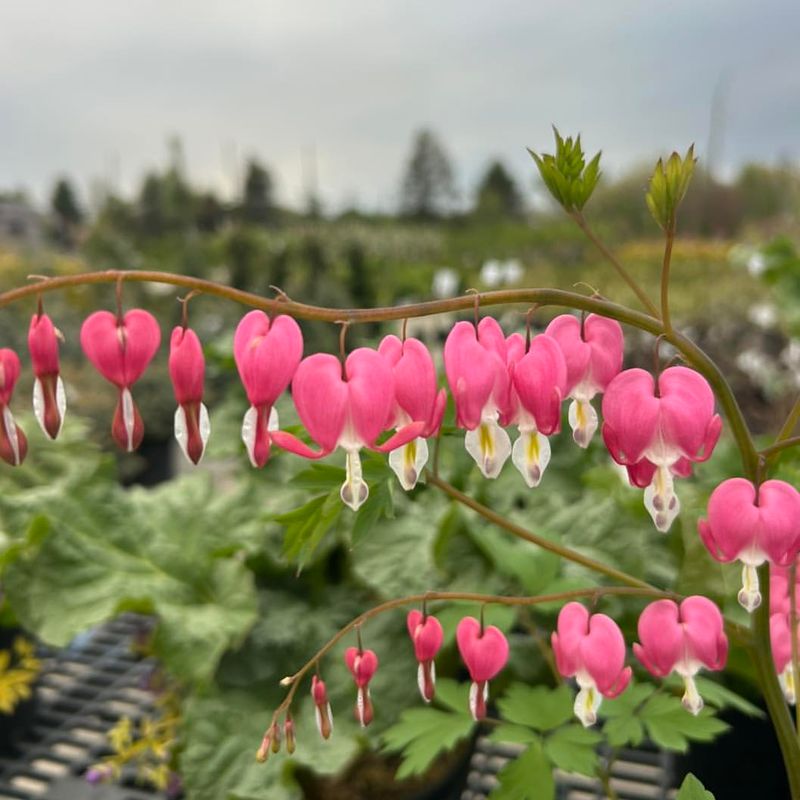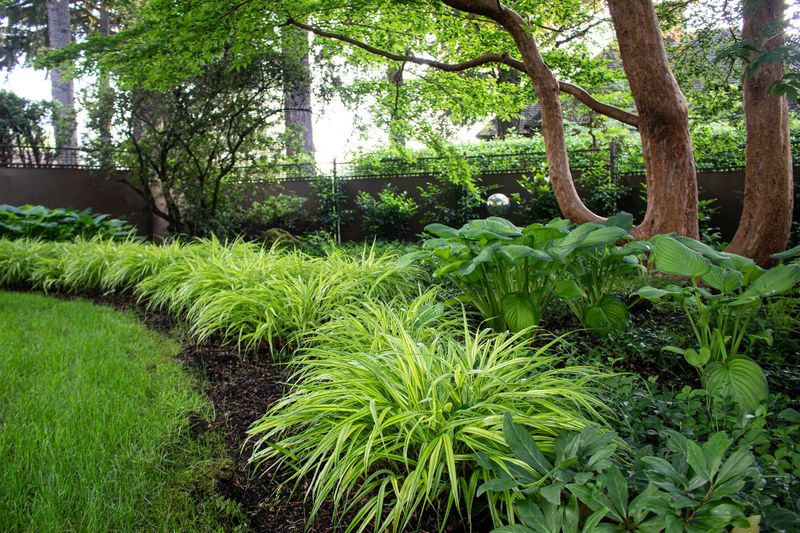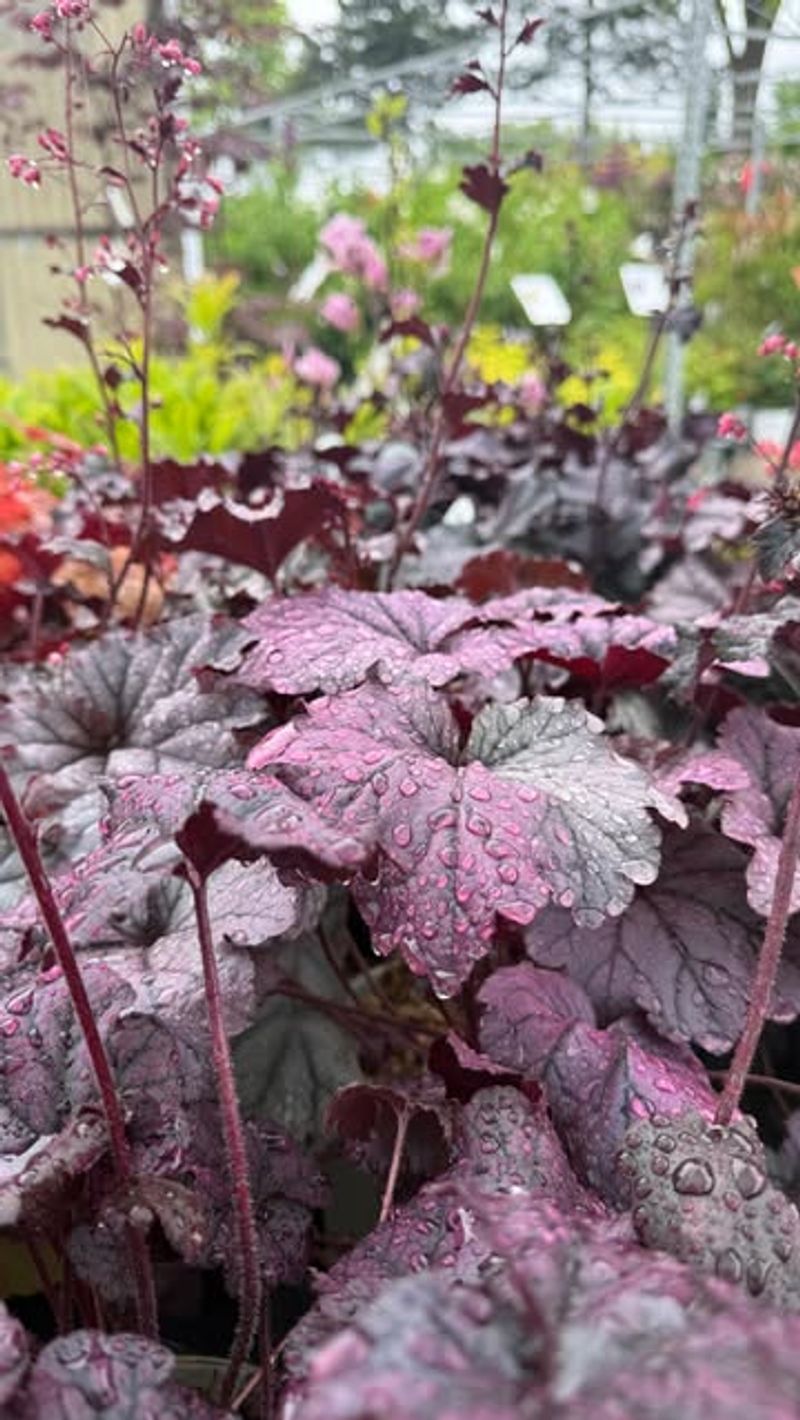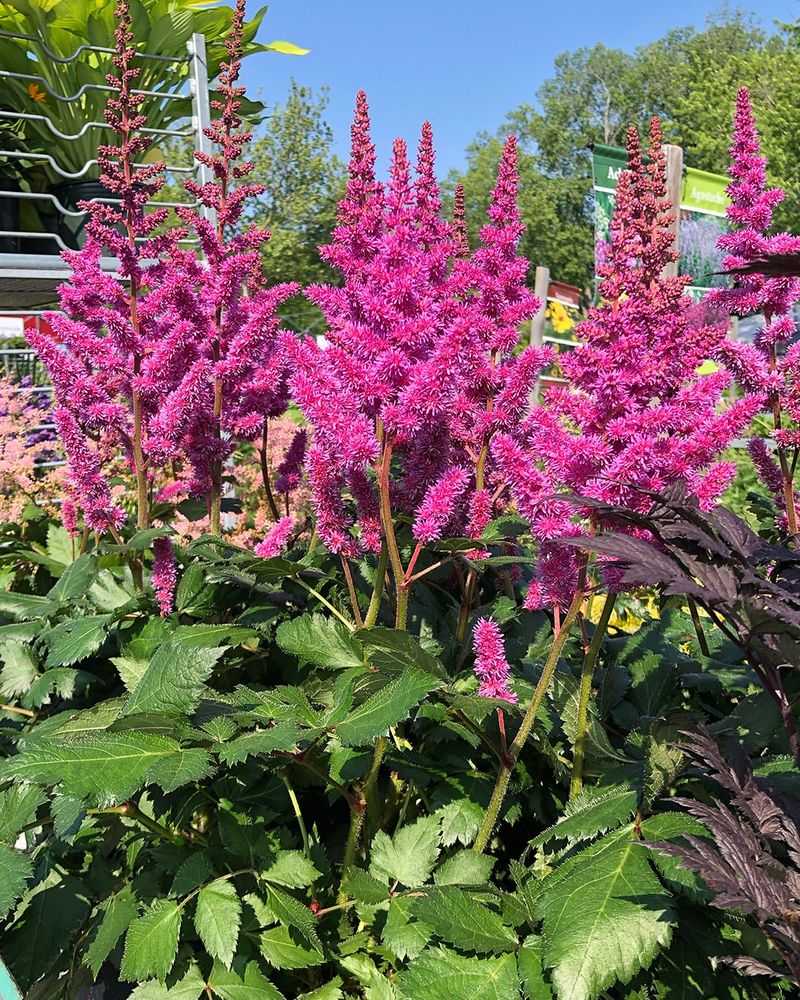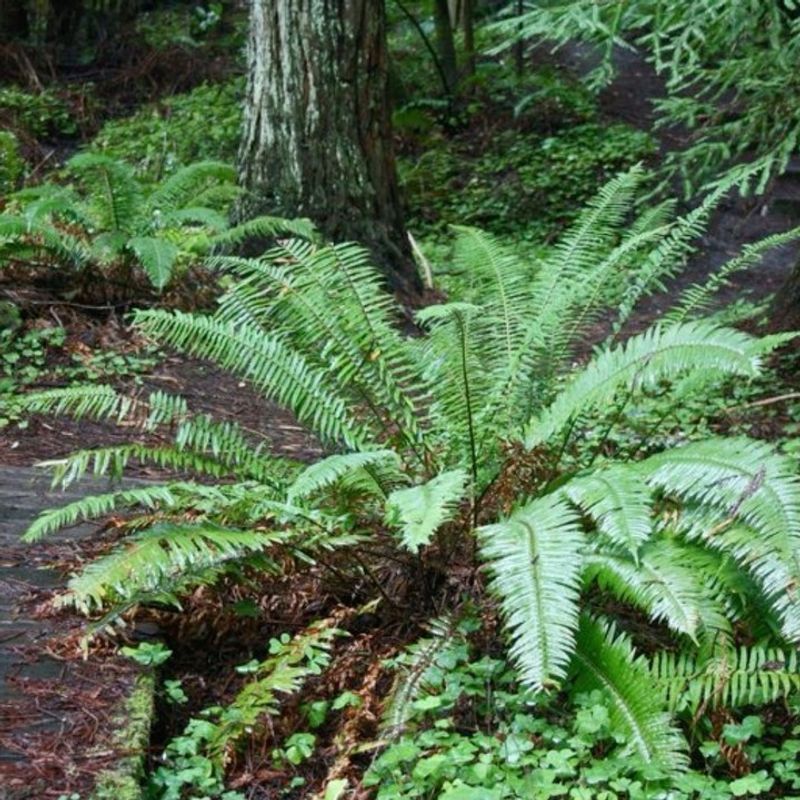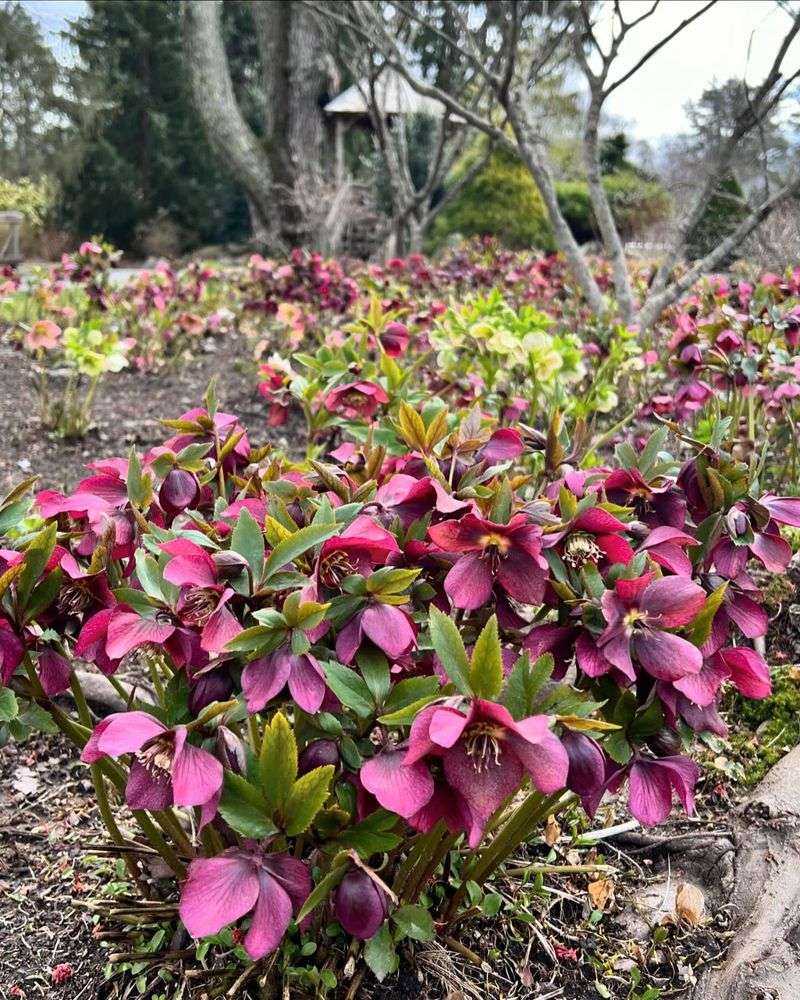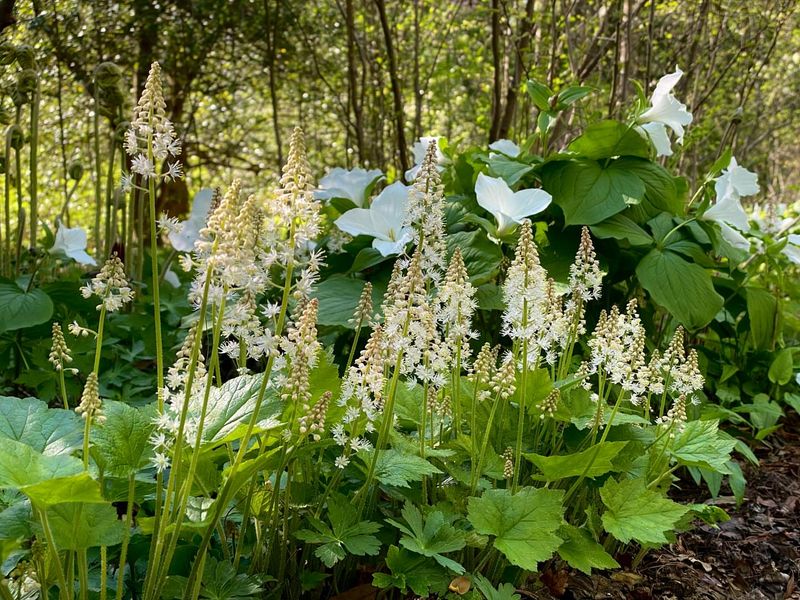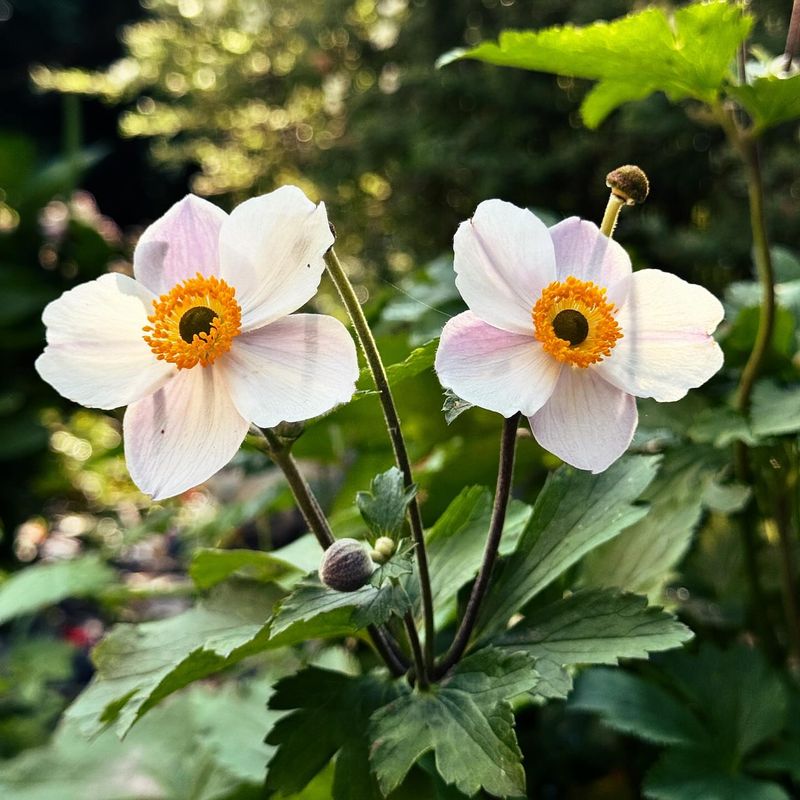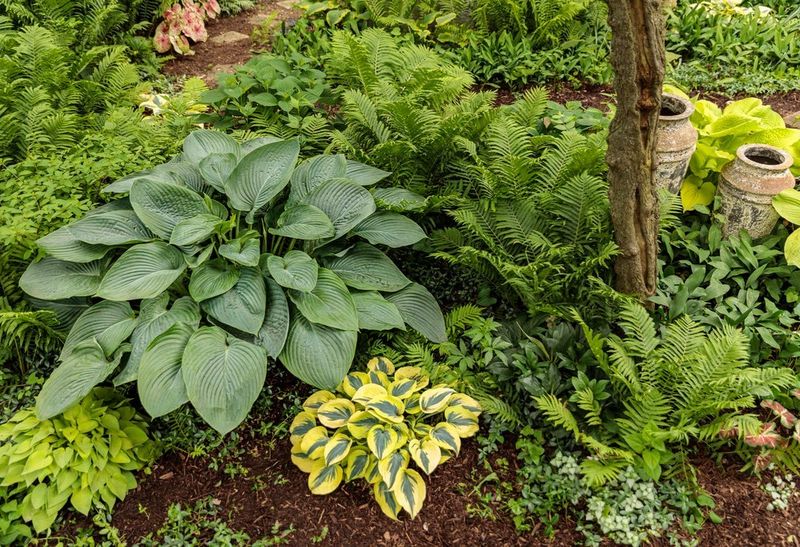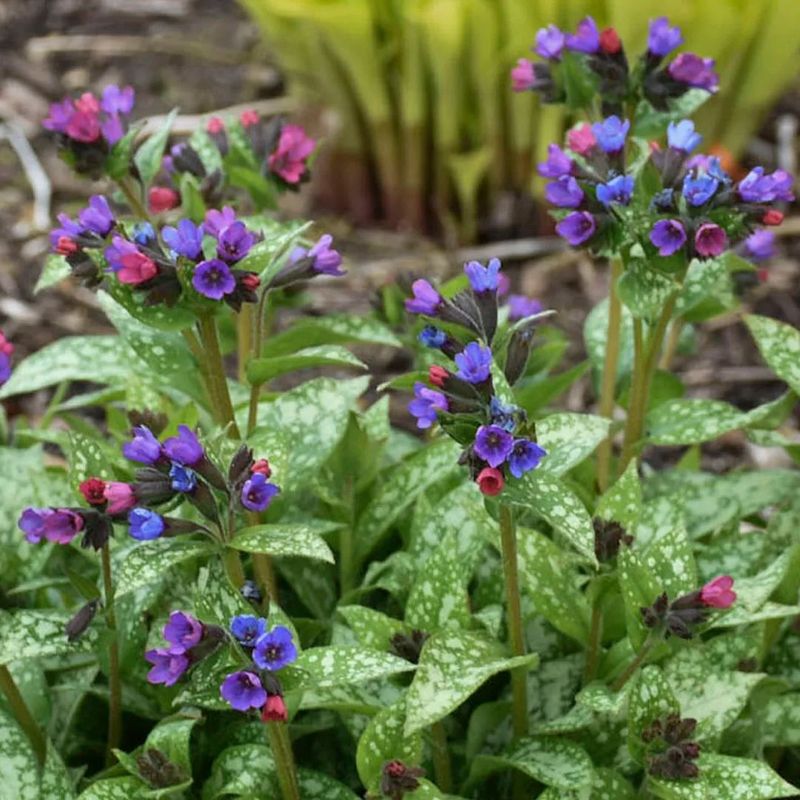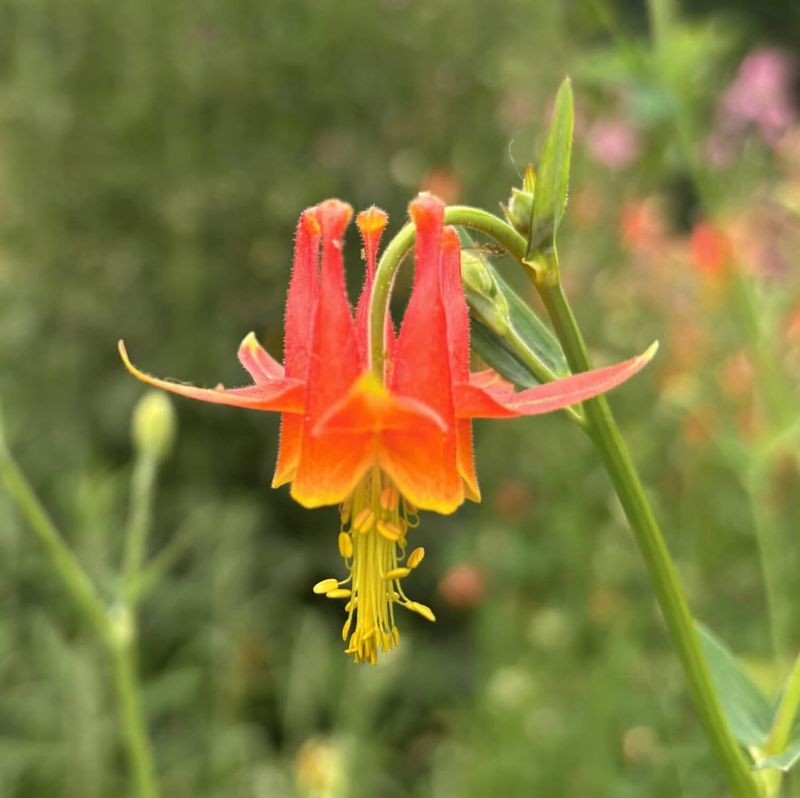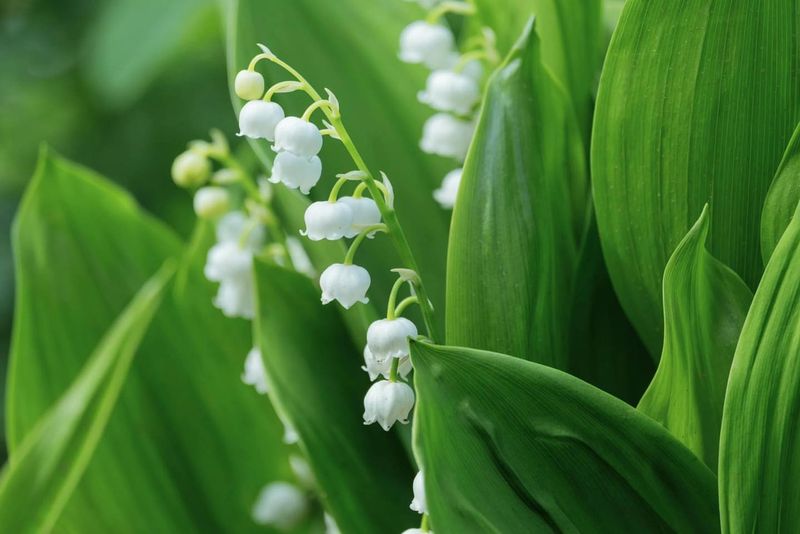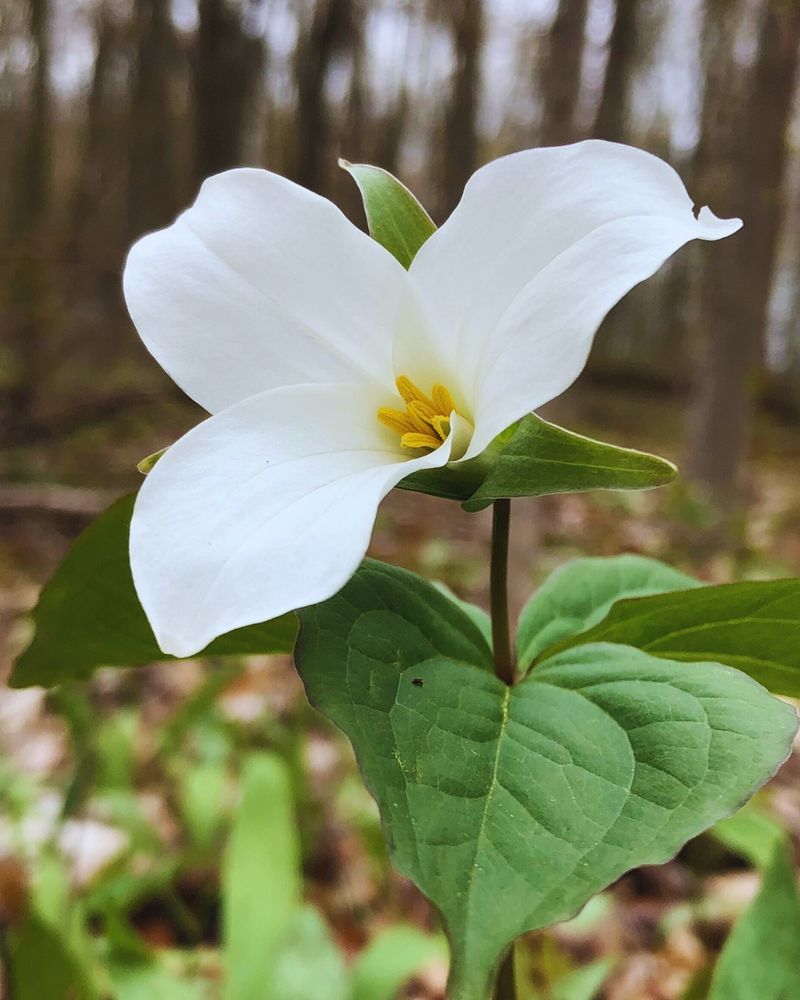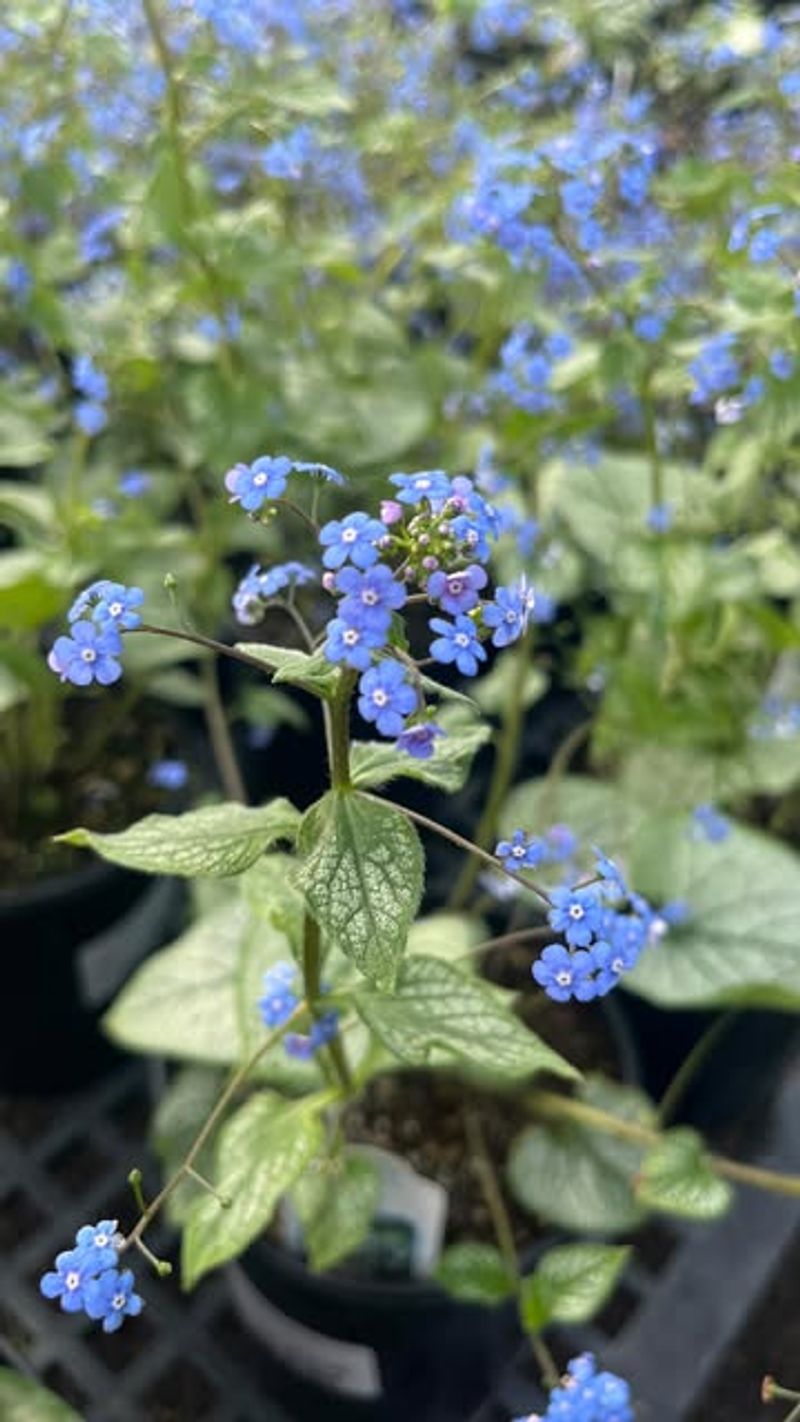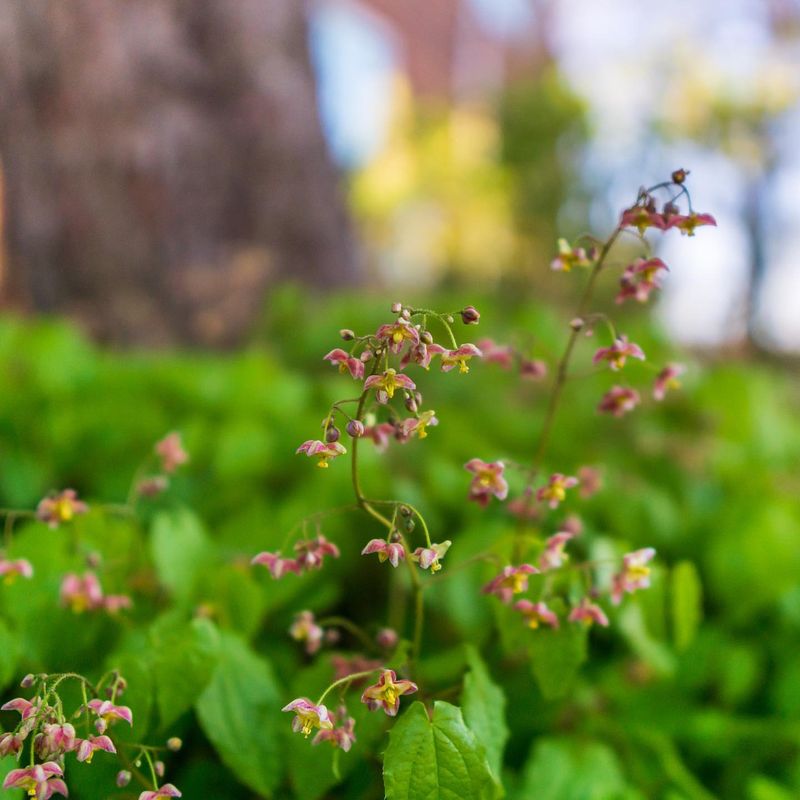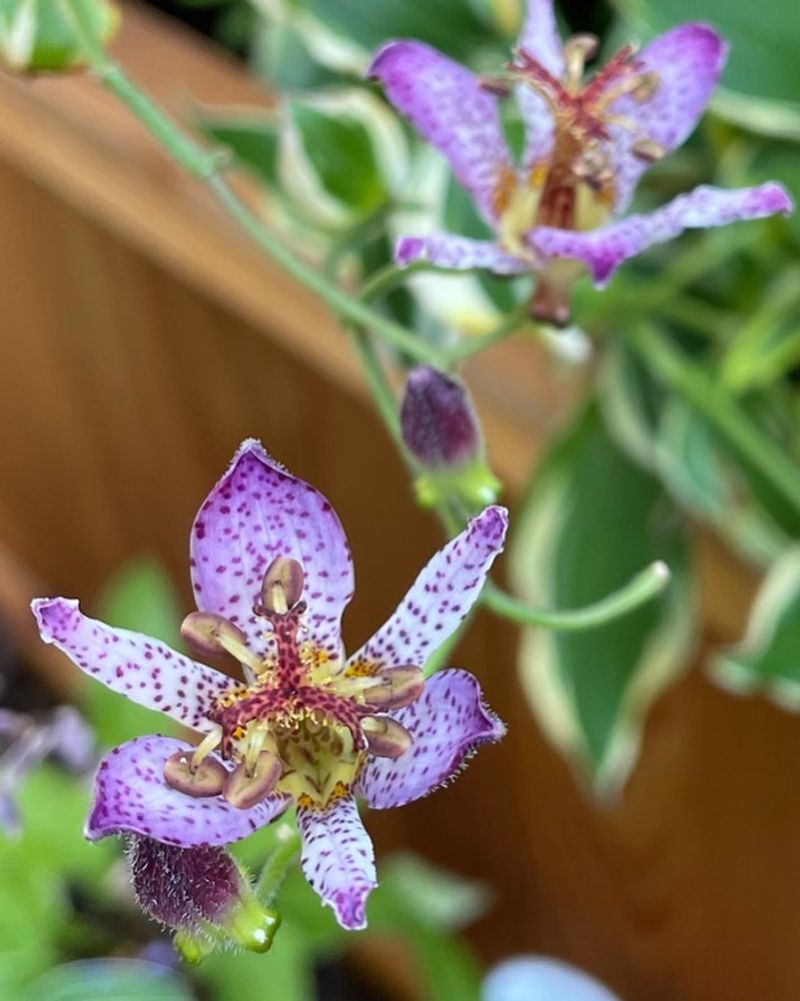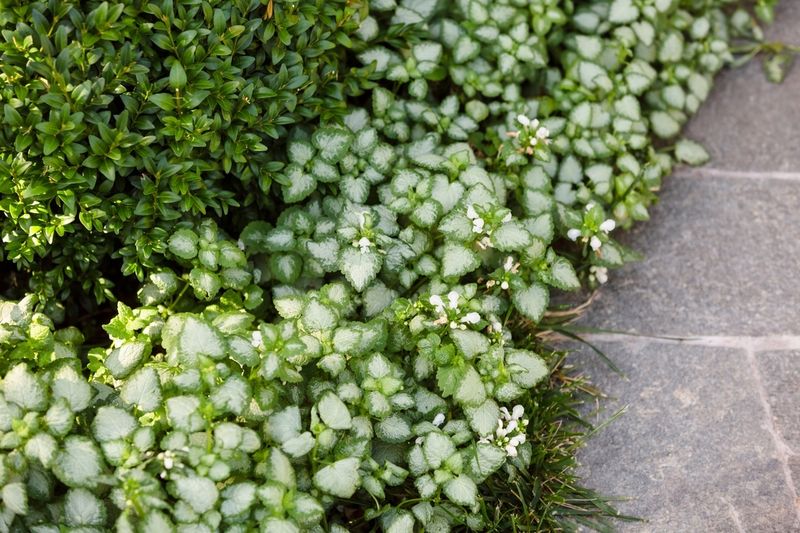Finding beautiful plants that flourish in shady Oregon gardens can be tricky. Our state’s unique climate, with its rainy winters and varying summer conditions, creates special challenges for gardeners with tree-covered yards.
Luckily, nature offers plenty of stunning perennials that not only survive but actually prefer those cooler, shadier spots in your garden.
1. Bleeding Heart
Those heart-shaped pink or white flowers dangling from arched stems make Bleeding Hearts an instant romantic addition to any shaded garden corner. Native to Oregon’s forests, they naturally thrive in our climate.
Plant them in rich, moist soil where they’ll receive morning sunlight but afternoon shade. They’ll disappear in summer’s heat, going dormant until next spring, so pair them with ferns or hostas that will fill the space later.
2. Japanese Forest Grass
Graceful cascades of bright gold-striped leaves bring movement and light to dark corners of the garden. Japanese Forest Grass creates a waterfall effect that glows even in deep shade, making it perfect for brightening dim spots.
Slow-growing but worth the wait, this ornamental grass prefers consistent moisture but established plants handle dry periods surprisingly well. The arching form looks stunning spilling over pathways or contrasting with broad-leaved companions like hostas.
3. Coral Bells
Vibrant foliage in shades of purple, bronze, silver, or lime green makes Coral Bells stand out year-round in Oregon gardens. Their delicate flower stalks rise above the colorful leaves, attracting hummingbirds during summer months.
Plant these versatile perennials in groups for maximum impact. They prefer well-drained soil with moderate moisture and perform beautifully in dappled shade. Many varieties even tolerate deeper shade while maintaining their striking colors, providing visual interest through every season.
4. Fern-Leaf Bleeding Heart
Unlike its spring-blooming cousin, this delicate beauty offers months of pink heart-shaped flowers above lacy blue-green foliage. Fern-leaf Bleeding Heart begins flowering in spring and continues through early fall in cool Oregon gardens.
Perfectly suited to our climate, it thrives in humus-rich woodland soil with consistent moisture. The ferny texture adds wonderful contrast next to broader-leaved shade plants. At just 12-18 inches tall, it makes an excellent front-of-border choice in shady garden beds.
5. Japanese Painted Fern
Silvery fronds brushed with purple and green create a magical, shimmering effect in shady corners. Japanese Painted Fern brings subtle drama to woodland gardens with its metallic coloration that seems to glow in low light.
Growing just 12-18 inches tall, these ferns spread slowly to form elegant clumps. They prefer consistently moist, humus-rich soil but can handle occasional dry spells once established. Pair them with dark-leaved heucheras for a stunning color contrast that brightens even the shadiest garden spots.
6. Astilbe
Feathery plumes in shades of pink, red, lavender, and white rise above ferny foliage, creating vertical interest in the shade garden. Astilbes bring a welcome burst of color during summer months when many shade plants have finished blooming.
These reliable performers thrive in Oregon’s moist, cool conditions. Plant them in rich soil that stays consistently damp. The dried flower heads extend seasonal interest into fall and winter, providing texture and structure during dormant months when many other perennials have disappeared.
7. Western Sword Fern
Native to Oregon’s forests, Western Sword Fern brings authentic woodland character to home gardens. The glossy, evergreen fronds reach up to 4 feet long, creating dramatic structure and year-round interest.
Incredibly tough once established, these native ferns survive our dry summers with minimal irrigation. They prefer acidic soil with plenty of organic matter. Plant them under native trees like Douglas fir or Western red cedar to create an authentic Pacific Northwest woodland garden that requires little maintenance.
8. Hellebore
Winter-blooming flowers in shades of white, pink, purple, and even black make Hellebores true garden treasures. Their nodding, cup-shaped blooms appear when little else is flowering, sometimes pushing through snow in late winter.
Deer and rabbit resistant, these tough perennials thrive in Oregon’s climate. The leathery, evergreen foliage provides structure year-round. New varieties offer upward-facing flowers and spotted or picotee patterns. Once established, they self-seed gently, creating beautiful colonies in woodland gardens.
9. Foamflower
Delicate spires of tiny star-shaped flowers hover above attractive maple-like leaves, creating a frothy effect in spring gardens. Native to Oregon woodlands, Foamflower spreads gently to form beautiful groundcover colonies in shady spots.
The semi-evergreen foliage often develops burgundy tones in cooler weather, adding winter interest. Plant it alongside spring bulbs for a layered woodland effect. Foamflower thrives in the same conditions as our native ferns—rich, moist soil with plenty of organic matter and protection from hot afternoon sun.
10. Japanese Anemone
Elegant pink or white flowers dancing on tall, wiry stems bring late-season color to Oregon shade gardens. Japanese Anemones bloom from late summer through fall when many other perennials have finished their show.
The saucer-shaped flowers with yellow centers attract butterflies and provide welcome color as gardens transition toward autumn. They prefer rich soil that stays evenly moist. Give them room to spread, as they slowly form impressive colonies over time, creating dramatic drifts of color under trees.
11. Hosta
Bold, architectural leaves in countless patterns of green, blue, gold, and variegated combinations make Hostas the backbone of shade gardens. Their sculptural presence provides structure from spring through fall.
Summer brings spikes of lavender or white flowers that attract hummingbirds. Thriving in Oregon’s climate, they prefer rich soil with consistent moisture. Hundreds of varieties range from tiny 6-inch mounds to massive 4-foot specimens. Combine different leaf colors, sizes, and textures for dramatic shade garden displays.
12. Epimedium
Fairy-like flowers hover above heart-shaped leaves in spring, earning Epimedium the charming nickname “Fairy Wings.” New foliage often emerges with bronze or red tints before maturing to green.
Incredibly tough once established, these shade-lovers handle dry conditions under trees where other plants struggle. The semi-evergreen leaves provide winter interest in mild Oregon winters. Slow-spreading but long-lived, Epimediums make excellent groundcovers for difficult dry shade spots where roots compete for moisture.
13. Lungwort
Silver-spotted leaves shine like stars in shady garden corners, making Lungwort valuable even when not in bloom. In early spring, clusters of pink buds open to blue flowers, often showing both colors simultaneously.
The spotted foliage resembles lungs, giving this plant its unusual name and historical medicinal connections. Preferring rich, moist soil in dappled shade, Lungwort thrives in Oregon’s climate. Unlike many shade plants, it rarely needs dividing and maintains tidy clumps for years.
14. Columbine
Dancing on slender stems, the unique spurred flowers of Columbine attract hummingbirds to shady gardens. Available in virtually every color, these charming blooms hover above lacy blue-green foliage from spring into early summer.
Native species and garden hybrids both perform beautifully in Oregon’s climate. They self-seed gently, creating naturalized drifts in woodland gardens. Preferring rich, well-drained soil with consistent moisture, Columbines nonetheless tolerate drier conditions once established, making them versatile additions to partly shaded Oregon gardens.
15. Lily of the Valley
Sweetly fragrant white bells dangling above glossy green leaves bring old-fashioned charm to shady garden corners. The intoxicating scent of Lily of the Valley fills the spring air, making it perfect near patios or garden benches.
Spreading by underground rhizomes, they create lush groundcover in difficult shady areas. The bright red berries that follow the flowers add late-season interest. Plant them where they can spread without overwhelming smaller plants. All parts are toxic, so keep away from children’s play areas.
16. Trillium
Three-petaled flowers rise above whorls of three leaves, giving Trillium both its name and distinctive appearance. Native to Oregon forests, these woodland treasures bring authentic wildflower beauty to home gardens.
Flowers open white and often age to pink or deep rose. Once established, Trilliums can live for decades, slowly forming impressive colonies. They go dormant in summer, so plant them with ferns or other perennials that will fill in later. Never collect from the wild—purchase only nursery-propagated plants.
17. Brunnera
Heart-shaped leaves with stunning silver variegation light up shady corners like constellations of stars. Brunnera ‘Jack Frost’ and similar varieties bring brightness to the darkest garden spots with their frost-patterned foliage.
Clusters of tiny blue forget-me-not flowers appear in spring, hovering above the spectacular leaves. The foliage remains attractive all season in Oregon’s mild climate. Plant in rich, moist soil in shade or partial shade. Brunnera forms tidy clumps that rarely need dividing.
18. Barrenwort
Tough yet delicate-looking, Barrenwort solves the challenging problem of dry shade under trees. The heart-shaped leaves emerge with bronzy tints in spring before turning green, then often develop red or bronze fall color.
Sprays of tiny flowers in yellow, pink, white, or purple appear in spring, resembling miniature orchids on close inspection. These long-lived perennials spread slowly to form weed-suppressing groundcover. Perfect for those difficult spots where tree roots compete for water and nutrients.
19. Toad Lily
Exotic-looking spotted flowers appear in late summer and fall when shade gardens often lack color. Toad Lilies produce orchid-like blooms speckled with purple dots along arching stems when most perennials have finished flowering.
The lance-shaped leaves create an attractive presence all season. These unusual perennials thrive in Oregon’s climate, preferring rich, moist soil in dappled shade. Plant them where their intricate flowers can be appreciated up close, perhaps along a shaded pathway or near a garden bench.
20. Lamium
Silvery foliage brightens dark corners while solving erosion problems on shady slopes. Also called Dead Nettle, Lamium forms a fast-growing groundcover that suppresses weeds in difficult areas.
Pink, purple, or white flowers appear abundantly in spring with sporadic blooming through summer. Varieties with silver-centered leaves bring light to the darkest garden spots. Tolerant of poor soil and dry conditions once established, Lamium thrives in Oregon gardens where many other plants struggle.


